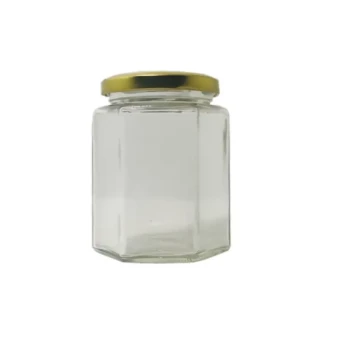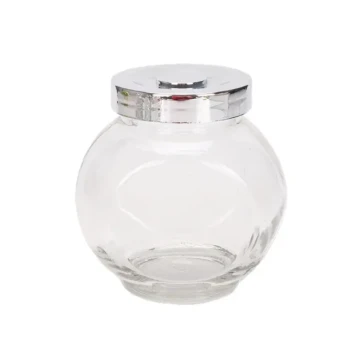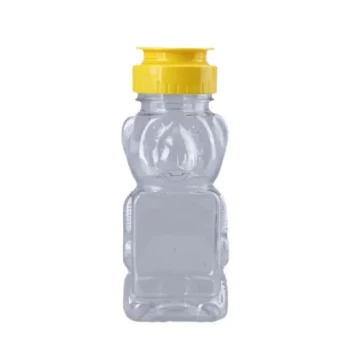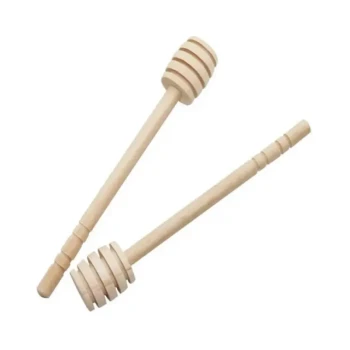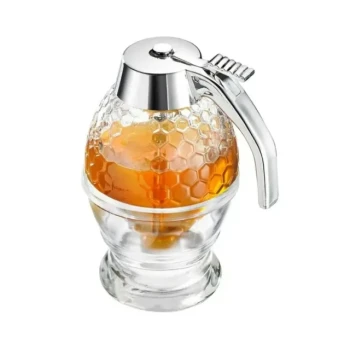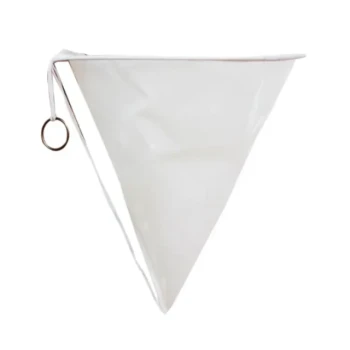For long-term quality and usability, the best way to jar honey is by using clean, dry, and airtight glass containers. This method preserves the honey's natural integrity and, crucially, allows you to easily manage the natural process of crystallization without damaging the container or the honey itself.
While plastic squeeze bottles seem convenient, they are impractical for genuine honey, which naturally crystallizes over time. Glass is the superior choice because it allows for gentle reheating to return the honey to its liquid state, a task that is difficult and potentially unsafe with plastic.
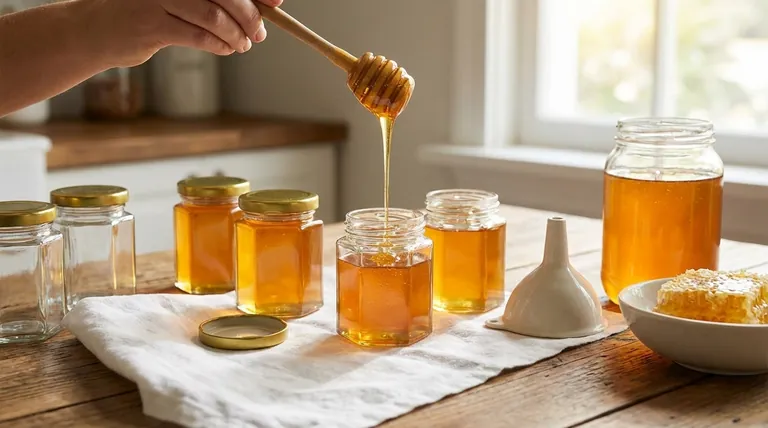
The Core Challenge: Why Your Container Choice Matters
Choosing a jar is not just about storage; it's about preservation and future usability. The primary factor influencing this choice is a natural process that occurs in all pure honey.
The Inevitability of Crystallization
Crystallization is not a sign of spoilage or poor quality. It is a natural and expected process where the glucose in honey separates from the water, forming sugar crystals.
This process is a hallmark of authentic, raw honey. Honey that never crystallizes is often highly filtered or processed, which can remove beneficial pollen and enzymes.
The Problem with Plastic Containers
The reference to avoiding honey-bear squeeze jars is critical. When honey crystallizes inside a flexible plastic bottle, it becomes a solid mass that you cannot squeeze out.
Attempting to re-liquefy the honey by heating the plastic is problematic. The plastic can warp, melt, or, in some cases, leach chemicals into the honey. It's a frustrating and impractical situation.
The Superiority of Glass Jars
Glass is the ideal material for jarring honey for one simple reason: it is inert and handles gentle temperature changes perfectly.
When your honey in a glass jar crystallizes, you can simply place the jar in a warm water bath. The gentle heat will slowly dissolve the crystals, returning the honey to its smooth, liquid state without damaging its delicate flavors or beneficial properties.
The Proper Jarring Process
The method you use to fill your jars is just as important as the jars themselves. A clean process ensures the honey will last indefinitely.
Step 1: Prepare Your Jars
Your glass jars and lids must be perfectly clean and, most importantly, completely dry. Even a single drop of water can introduce microbes that may cause the honey to ferment over time.
Washing jars in a dishwasher with a heated dry cycle is an effective way to ensure they are both clean and thoroughly dried.
Step 2: Fill the Jars
For small batches, you can pour the honey slowly and carefully, or use a funnel to minimize mess. For larger quantities, a bottling bucket with a spigot, often called a honey gate, allows for a clean and controlled fill.
Fill the jars to the top, leaving minimal headspace. This reduces the amount of air in the jar, further protecting the honey.
Step 3: Seal and Store
Wipe any drips from the rim of the jar to ensure a clean, airtight seal. Store the sealed jars in a cool, dark place, like a pantry or cupboard.
Avoid storing honey in the refrigerator, as the cold temperatures will accelerate the crystallization process. Stable room temperature is ideal.
Understanding the Trade-offs
While glass is the technically superior choice, there are situations where other options might be considered. Understanding the pros and cons is key to making a pragmatic decision.
Glass Jars: The Standard of Quality
Glass conveys quality and is the best option for preservation. However, it is heavier and more fragile than plastic. This can increase shipping costs and risk of breakage if you plan to sell or mail your honey.
Plastic Containers: A Niche for Convenience
Food-grade plastic tubs or squeeze bottles can be acceptable for honey that is intended for immediate consumption. If you are selling at a local market for quick use, the convenience of a squeeze bottle can be a valid selling point.
However, it is wise to educate the consumer that if the honey crystallizes, it should be gently warmed by placing the bottle in a bowl of warm water, never in a microwave.
Making the Right Choice for Your Goal
Your final decision should be based on your primary objective for the honey you are jarring.
- If your primary focus is long-term home storage and quality preservation: Always choose clean, dry, airtight glass jars to ensure the best quality and easiest use over time.
- If your primary focus is gifting or selling for premium appeal: Glass is the unequivocal choice, as it visually presents the honey as a high-quality, artisanal product.
- If your primary focus is low-cost distribution or convenience for immediate use: High-quality, food-grade plastic may be a practical compromise, but be aware of its limitations regarding crystallization.
Ultimately, selecting the right container is the final, critical step in honoring the quality of your honey.
Summary Table:
| Aspect | Glass Jars | Plastic Containers |
|---|---|---|
| Crystallization Management | Excellent (safe to warm) | Poor (difficult/unsafe to warm) |
| Preservation & Quality | Superior, inert material | Good, but potential for leaching |
| Durability & Weight | Fragile, heavier | Lightweight, durable |
| Ideal For | Long-term storage, gifting, premium sales | Immediate use, low-cost distribution |
For Commercial Apiaries & Distributors: Jar Your Honey with Confidence
Ensuring the long-term quality of your honey harvest starts with the right equipment. HONESTBEE supplies beekeepers and beekeeping equipment distributors with the high-quality, wholesale supplies needed for efficient and professional honey processing and packaging.
From durable glass jars to efficient bottling buckets with honey gates, we provide the reliable tools that help you protect your product's integrity and appeal to your market.
Contact HONESTBEE today to discuss your wholesale supply needs and ensure your honey is presented and preserved perfectly.
Visual Guide
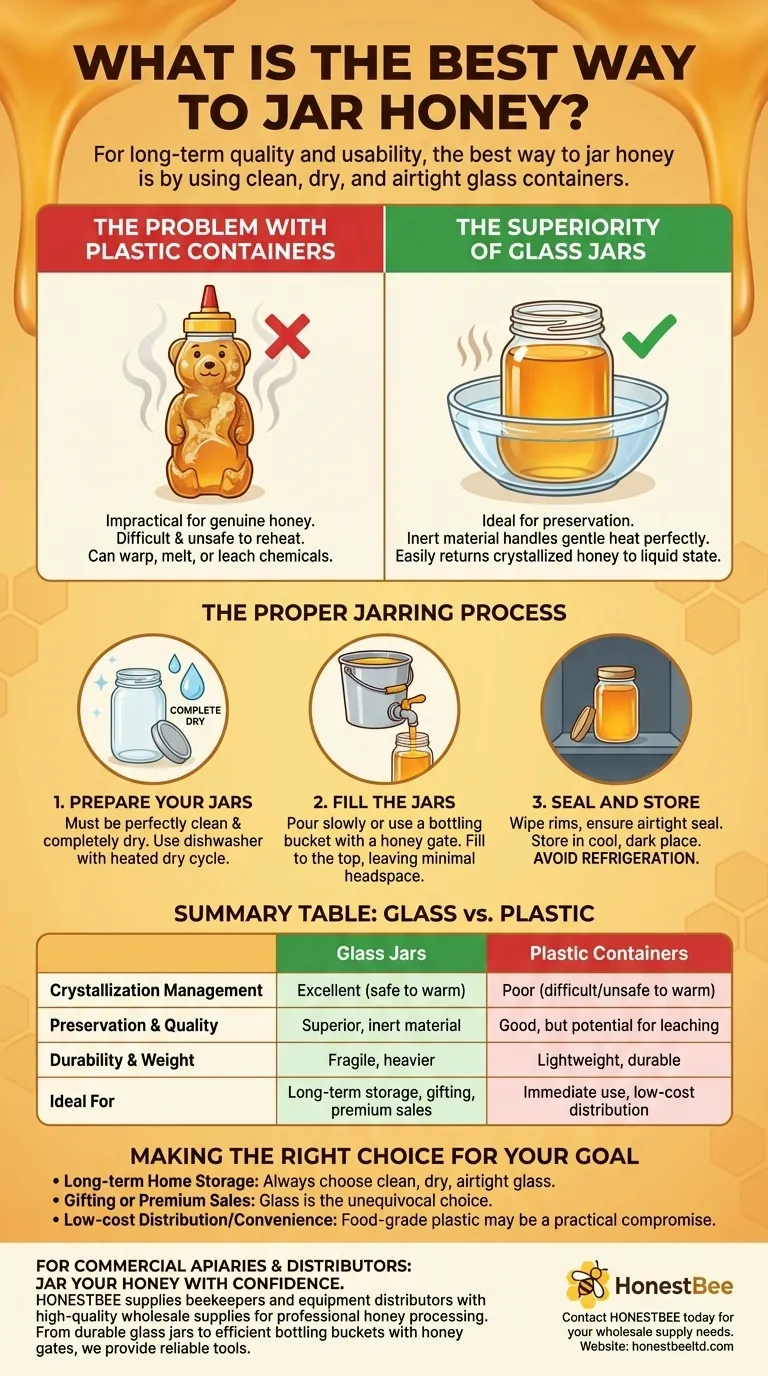
Related Products
- Hexagonal Glass Honey Jars with Metal Lug Caps Elegant Versatile Packaging
- Classic Drum Shaped Glass Honey Jar with Airtight Lid
- Inverted Squeezable Honey Jar with No Drip Flip Top Cap for Easy Pouring
- Classic Honey Bear Jars with Flip Top Dispensing Cap for Liquid Sweeteners
- Stainless Steel Honey Tank Stand for Honey Storage
People Also Ask
- How should honey be stored and packaged? Preserve Flavor & Quality with Proper Containers
- What makes raw honey more aesthetically appealing than processed honey? Discover the Beauty of Authenticity
- What are the advantages of using glass jars for honey packaging? Preserve Purity & Elevate Your Brand
- What is done with the honey after extraction and filtering? From Purification to Perfect Packaging
- What are the common types of honey packaging? A Guide to Glass, Plastic, Pouches & Tins
